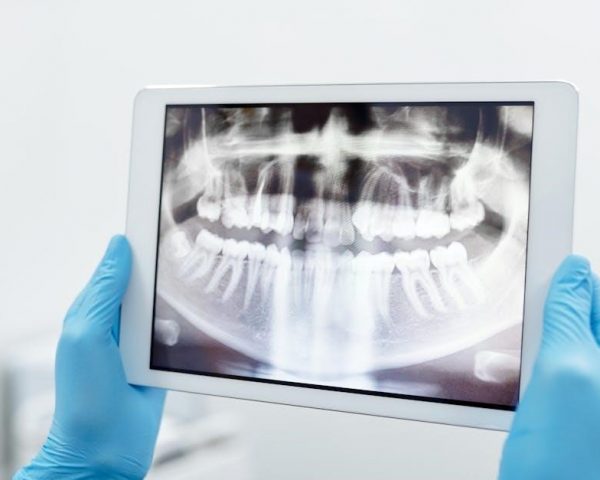Ketogenic Diet⁚ A Comprehensive Guide
This comprehensive guide explores the ketogenic diet‚ detailing allowed and prohibited foods‚ providing sample meal plans‚ and offering tips for long-term success. Downloadable PDF resources are available for personalized meal planning and keto-friendly food lists.
Understanding the Ketogenic Diet
The ketogenic diet‚ often referred to as the “keto diet‚” is a very low-carbohydrate‚ high-fat diet that forces the body into a metabolic state called ketosis. In ketosis‚ the body begins to burn stored fat for energy instead of glucose (sugar) from carbohydrates. This metabolic shift can lead to weight loss and has shown potential benefits for certain health conditions. The diet typically involves drastically reducing carbohydrate intake to 20-50 grams per day‚ while increasing the intake of healthy fats and moderate amounts of protein. It’s crucial to understand that transitioning to ketosis may initially cause some side effects‚ such as the “keto flu‚” characterized by fatigue‚ headache‚ and nausea. These symptoms usually subside as the body adapts. Successfully following a ketogenic diet requires careful meal planning and monitoring of carbohydrate intake. A downloadable PDF with a detailed food list can be a valuable tool for managing this diet effectively.
Allowed Foods in the Ketogenic Diet
The ketogenic diet emphasizes whole‚ unprocessed foods. High-fat options include avocados‚ olive oil‚ nuts (macadamia‚ pecans)‚ seeds (pumpkin‚ sunflower)‚ and fatty fish like salmon and mackerel. Protein sources such as grass-fed beef‚ poultry‚ eggs‚ and pork are encouraged. Non-starchy vegetables‚ including leafy greens (spinach‚ kale)‚ broccoli‚ cauliflower‚ and asparagus‚ are also integral to a keto diet. Full-fat dairy products like cheese‚ butter‚ and heavy cream can be included‚ but always check labels for added sugars. It’s important to note that while some berries are permitted in moderation due to their lower carbohydrate content‚ most fruits should be avoided. Remember‚ a downloadable keto food list PDF can simplify grocery shopping and meal preparation by providing a quick reference for allowed foods. Prioritizing nutrient-dense options ensures a balanced and effective ketogenic approach.
Prohibited Foods in the Ketogenic Diet
The ketogenic diet strictly limits foods high in carbohydrates and sugars. This includes sugary drinks (soda‚ juice)‚ processed snacks (cookies‚ candy)‚ most fruits (bananas‚ grapes)‚ and grains (bread‚ pasta‚ rice). Starchy vegetables like potatoes and corn should also be avoided. Legumes (beans‚ lentils) are high in carbohydrates and are not suitable for a ketogenic lifestyle. Many processed foods‚ even those marketed as “healthy‚” often contain hidden sugars or starches that can hinder ketosis. Alcoholic beverages‚ particularly those containing added sugars‚ should be limited or eliminated. To maintain ketosis effectively‚ it’s crucial to carefully read food labels to identify and avoid hidden carbohydrates. A downloadable PDF checklist of prohibited foods can be a helpful tool for navigating grocery stores and making informed dietary choices. Remember‚ consistency is key to achieving your ketogenic goals.
Keto-Friendly Food Lists⁚ A Detailed Breakdown
This section provides comprehensive lists categorizing keto-friendly foods by net carb content (per 100g) for easy meal planning and grocery shopping. Downloadable PDF versions are available for convenient reference.
Best Keto Foods (Under 3g Net Carbs/100g)
This category showcases the best choices for a strict ketogenic diet‚ featuring foods with exceptionally low net carbohydrate counts. Prioritize these options to maximize ketosis and weight-loss benefits. Leafy greens like lettuce (all varieties)‚ spinach‚ and kale are excellent additions‚ offering vital micronutrients with minimal carbs. Cruciferous vegetables such as broccoli‚ cauliflower‚ and asparagus are also highly recommended. Other low-carb vegetables include zucchini‚ tomatoes‚ and peppers. Among protein sources‚ prioritize fatty fish like salmon‚ mackerel‚ and sardines‚ along with lean meats like chicken breast and beef. Eggs are a versatile and nutrient-dense choice‚ providing protein and healthy fats. Remember to always check nutritional labels for accurate carb counts as variations can occur between brands and types.
Good Keto Foods (3-6g Net Carbs/100g)
This section highlights keto-friendly foods that contain a slightly higher net carb count (3-6g per 100g)‚ still suitable for many ketogenic diets but requiring mindful portion control. These foods offer a balance of nutritional value and moderate carbohydrate intake. Avocado‚ a healthy fat source rich in fiber and nutrients‚ fits well into this category. Certain berries like raspberries and strawberries can be enjoyed in moderation due to their antioxidant properties and relatively low carb content. Mushrooms‚ a good source of B vitamins‚ fall within this range. Remember to monitor your overall daily carbohydrate intake to ensure you remain in ketosis. While these foods are permissible‚ it’s crucial to integrate them strategically into your meal plan‚ potentially offsetting them with more carb-restricted foods during the day. Consult a nutritionist or healthcare professional for personalized guidance based on your individual needs and health goals. Accurate carb counting remains essential for success.
Sample Ketogenic Diet Meal Plans
Explore sample keto meal plans‚ including a 7-day example and downloadable personalized PDFs to guide your keto journey. These plans offer delicious and practical meal ideas.
7-Day Keto Meal Plan Example
Day 1⁚ Breakfast⁚ Scrambled eggs with spinach and cheese; Lunch⁚ Grilled chicken salad with avocado and olive oil dressing; Dinner⁚ Baked salmon with roasted asparagus. Day 2⁚ Breakfast⁚ Keto smoothie with unsweetened almond milk‚ protein powder‚ and berries; Lunch⁚ Leftover salmon and asparagus; Dinner⁚ Steak with cauliflower mash. Day 3⁚ Breakfast⁚ Chia seed pudding with unsweetened almond milk and nuts; Lunch⁚ Tuna salad (made with mayonnaise) lettuce wraps; Dinner⁚ Pork chops with green beans. Day 4⁚ Breakfast⁚ Omelet with mushrooms and cheese; Lunch⁚ Leftover pork chops and green beans; Dinner⁚ Chicken stir-fry with low-carb vegetables. Day 5⁚ Breakfast⁚ Bulletproof coffee (coffee with butter and MCT oil); Lunch⁚ Salad with grilled shrimp and avocado; Dinner⁚ Ground beef and broccoli. Day 6⁚ Breakfast⁚ Coconut yogurt with berries; Lunch⁚ Leftover ground beef and broccoli; Dinner⁚ Baked cod with zucchini noodles. Day 7⁚ Breakfast⁚ Scrambled eggs with bacon; Lunch⁚ Leftover cod and zucchini noodles; Dinner⁚ Steak with a side salad.
Personalized Keto Meal Plans (PDF Downloadable)
Tailor your keto journey with our downloadable PDF meal plans! These personalized plans cater to individual dietary needs and preferences‚ ensuring a diverse and satisfying keto experience. Choose from a range of options‚ including vegetarian keto‚ high-protein keto‚ or plans focusing on specific macronutrient ratios. Each PDF provides a detailed 7-day meal plan with delicious‚ easy-to-follow recipes. The plans include comprehensive shopping lists to simplify grocery shopping and minimize decision fatigue. Downloadable grocery lists and recipe cards are also included for convenience. These personalized plans promote adherence to the ketogenic diet by offering variety and eliminating guesswork‚ making your keto lifestyle simpler and more enjoyable. Access your personalized keto meal plan PDF now and embark on your customized weight loss or health improvement journey.
Keto Diet⁚ Maintaining Sustainability
Learn strategies for long-term keto success. Discover tips for managing ketosis‚ adapting the diet to different lifestyles‚ and integrating keto into your daily life for lasting results.
Tips for Maintaining Ketosis
Maintaining ketosis requires consistent effort and mindful choices. Prioritize adequate hydration by drinking plenty of water throughout the day; dehydration is a common issue in the initial stages. Incorporate a wide variety of keto-friendly foods to prevent nutritional deficiencies and combat boredom. Listen to your body; if you experience adverse effects‚ adjust your intake accordingly. Regularly monitor your ketone levels using urine strips or blood meters to ensure you remain in ketosis. Don’t be afraid to adjust your macronutrient ratios based on your individual needs and response. Consider consulting a healthcare professional or registered dietitian for personalized guidance. They can help you create a sustainable plan tailored to your specific health goals and circumstances. Remember that consistency is key; stick to your plan‚ and don’t get discouraged by occasional setbacks. Celebrate your successes and make necessary adjustments along the way to maintain a healthy and sustainable ketogenic lifestyle.
Adapting the Keto Diet to Different Lifestyles
The ketogenic diet’s adaptability is a key strength. Busy professionals can prepare meals in advance or utilize quick keto-friendly options like salads with healthy fats and protein. Individuals with active lifestyles should adjust their macronutrient ratios to support their energy expenditure‚ potentially increasing healthy fat intake. Those following a vegetarian or vegan keto diet need to carefully plan their meals to ensure sufficient protein and healthy fats from plant-based sources. Travelers can pack keto-friendly snacks and meals‚ utilizing local markets for fresh produce and protein. Social situations can be navigated by choosing keto-friendly options at restaurants or bringing a dish to share. Families can adapt keto by incorporating family-friendly recipes and involving children in meal preparation. Remember that flexibility is crucial; the key is to find a sustainable approach that aligns with your individual needs and preferences‚ ensuring consistent adherence to the principles of the ketogenic diet.


